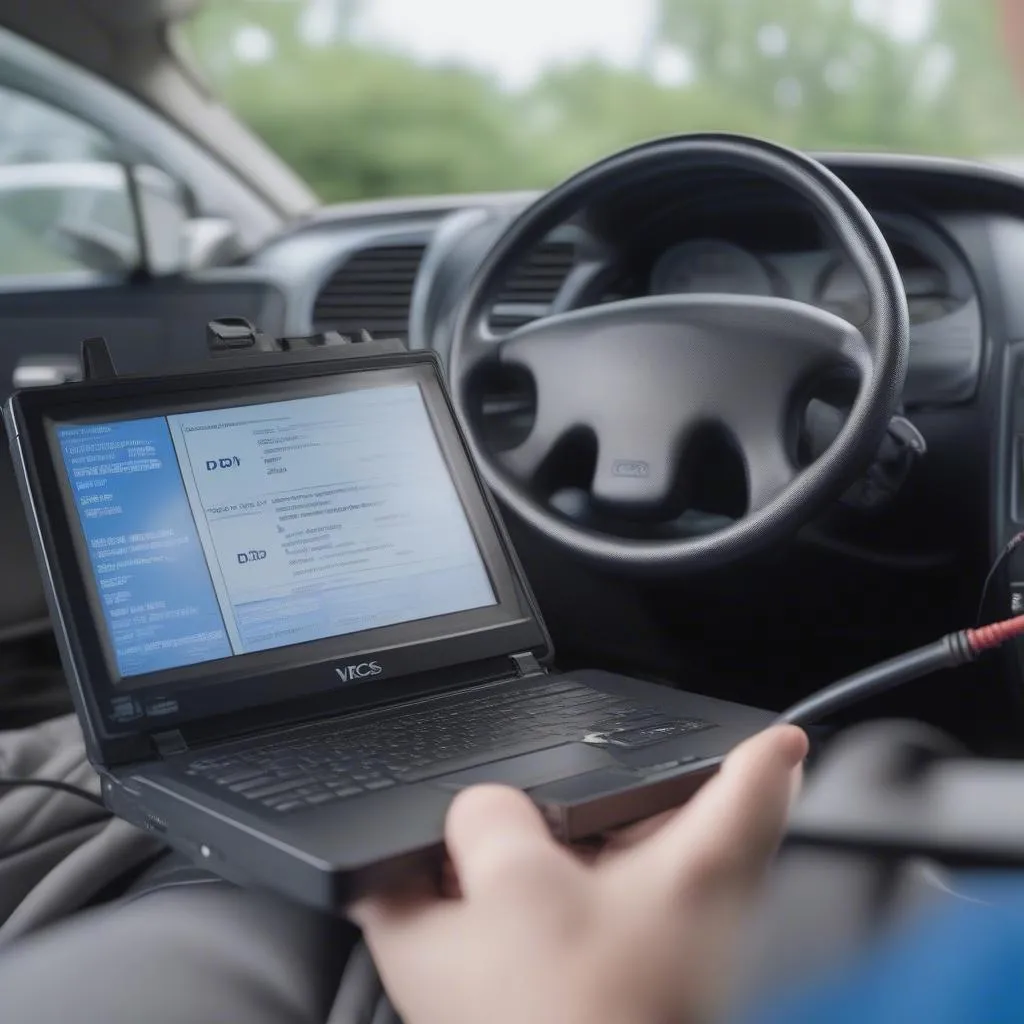Mastering the VCDS Camshaft Position Sensor Test: A DIY Guide to Pinpointing Engine Trouble
“If your car’s engine is a symphony, the camshaft position sensor is the conductor ensuring every note hits perfectly.” Heard that one before? While a bit dramatic, it highlights the crucial role this little sensor plays. A tiny hiccup in its performance, and your engine’s harmony can quickly turn into a cacophony of misfires and poor performance.
But fear not, fellow gearheads! This guide, armed with the power of VCDS (Vag-Com Diagnostic System), will empower you to diagnose camshaft position sensor issues in your European car like a seasoned mechanic.
What Does “VCDS Camshaft Position Sensor Test” Even Mean?
Before diving into the nitty-gritty, let’s break down this technical jargon into plain English.
- Camshaft Position Sensor: This sensor is the unsung hero that tells your car’s computer (the Engine Control Unit or ECU) the exact position of your camshafts. This information is vital for precise fuel injection and ignition timing.
- VCDS: This powerful diagnostic software, also known as Vag-Com, acts as a direct line of communication with your European car’s ECU, allowing you to access a treasure trove of data and perform various tests – including the all-important camshaft position sensor test.
Essentially, the “Vcds Camshaft Position Sensor Test” is your way of playing detective, using the VCDS software to interrogate your car’s ECU and see if the camshaft position sensor is sending the right signals at the right time.
Why Is This Test So Important?
Imagine this: You’re cruising down the highway, late for an important meeting (or maybe a romantic date!), and your engine suddenly starts sputtering, throwing a dashboard lit up like a Christmas tree. A failing camshaft position sensor could be the culprit behind this automotive nightmare.
Here’s why this test is your best bet to diagnose the issue:
- Pinpoint the Problem: This test eliminates the guesswork, giving you a definitive answer on whether your camshaft position sensor is faulty.
- Save Money: Diagnosing the problem yourself with VCDS can save you a hefty sum on expensive mechanic fees.
- Prevent Further Damage: Catching a failing sensor early can prevent potentially catastrophic engine damage down the road.
Signs Your Camshaft Position Sensor Might Be Singing Its Swan Song
Beyond a check engine light glaring ominously from your dashboard, here are some telltale signs of a failing camshaft position sensor:
- Engine Stalling: Your engine suddenly quits, especially when idling.
- Rough Idling: Your engine feels like it’s about to shake itself apart when idling.
- Poor Acceleration: Your car struggles to gain speed, like a marathon runner with lead shoes.
- Reduced Fuel Economy: Your car suddenly develops a thirst for fuel that would make a Hummer blush.
Getting Down to Business: Performing the VCDS Camshaft Position Sensor Test
Now for the moment you’ve been waiting for! Here’s a simplified breakdown of how to perform the VCDS camshaft position sensor test:
Before You Begin:
- Ensure you have a genuine VCDS interface and the correct software version for your car.
- Park your car on a level surface and engage the parking brake.
Let’s Get Testing:
-
Connect: Connect the VCDS interface to your car’s OBD-II port (usually located under the dashboard on the driver’s side).
-
Power Up: Turn the ignition on, but don’t start the engine.
-
Launch VCDS: Launch the VCDS software on your computer and select your car’s model.
-
Select “Engine” Control Module: Navigate to the “Engine” control module within the VCDS software.
-
Go to “Measuring Blocks”: Choose “Measuring Blocks” or “Live Data”.
-
Find the Right Group: Locate the measuring block group that displays data from your camshaft position sensor. This group may vary depending on your car model, so consult your VCDS documentation or a reliable online forum.
-
Monitor the Values: Carefully observe the values displayed for the camshaft position sensor. The values should change smoothly and consistently as you crank the engine (without starting it).
-
Analyze the Results:
- Fluctuating or erratic readings: This usually indicates a problem with the sensor itself or its wiring.
- No reading at all: This could point to a completely failed sensor, damaged wiring, or a problem with the sensor circuit.
Remember: The specific steps and data interpretation may differ slightly depending on your car’s make and model.
camshaft-position-sensor-illustration|Camshaft Position Sensor|A detailed illustration of a camshaft position sensor in place on an engine, with clear labeling of its components and wiring. The illustration should be visually appealing and informative, highlighting the sensor’s location and connection points.
vcds-interface-connected|VCDS Interface Connected|A realistic photo showing the VCDS interface connected to a car’s OBD-II port. The photo should showcase the connection point and the interface clearly, emphasizing its ease of use and compatibility with modern vehicles.

